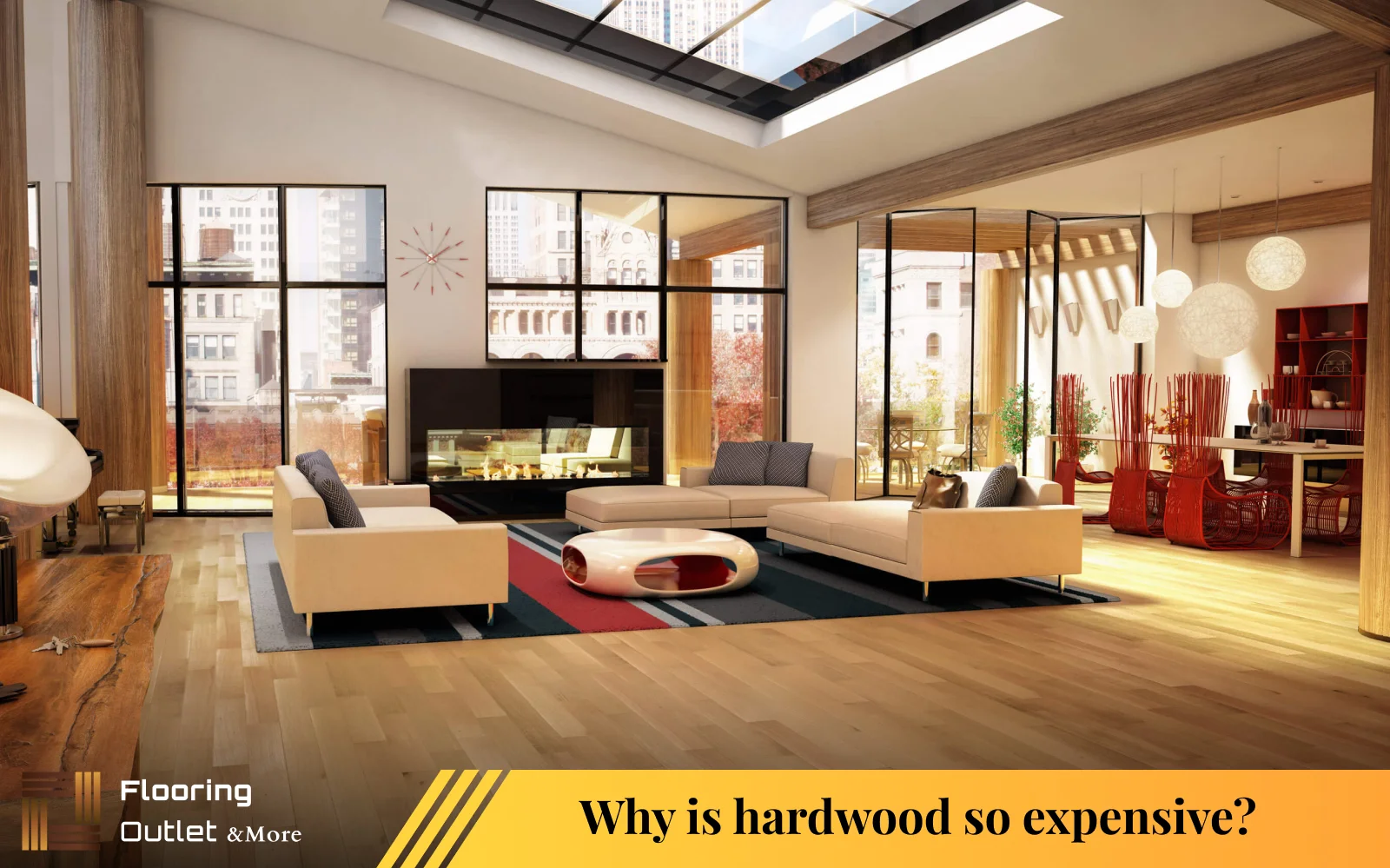The Most High-End, Expensive Flooring

Are you looking for the ultimate luxury? Interior design begins with choosing a flooring that balances both aesthetics and functionality. So you need to decide which type is the most suitable for your space to meet all your needs. Besides your personal preference, if you do not have a limited budget, you can choose among elegant, expensive floorings. Have you ever wondered what the most expensive type of flooring is? There is a variety of floorings to choose from, but let’s see which one is on top of the list:
Expensive Wood Flooring
Always popular! Hardwood has always been the number one choice among homeowners. It is a big investment in your house since not only does it offer timeless durability, but it also adds character and visual appeal to the space. Versatility is the next benefit of wood flooring; it can be used in almost all sorts of environments, from humid areas to mild climates. On the other hand, hardwood exists in different shapes, styles, and colors thanks to the varying materials used in manufacturing engineered hardwood flooring.
Now, when it comes to the price, there are several contributing factors, such as the type of wood species, wood thickness, material quality, and the size of your space. In general, the overall price of hardwood ranges from 5 to 15$ per square foot.
What makes wood flooring so expensive?

One of the factors determining the hardwood is the type of wood species, such as oak, elm, ziricote, Australian walnut, etc. Each of these species has a different durability and offers a different design. The cheapest flooring types include oak, walnut, cherry, and maple. On the other hand, exotic hardwoods, including Brazilian cherry, Tigerwood, and mahogany, are slightly more costly. These species are more expensive due to their scarcity and accessibility since they are imported to other countries. The prices start at 70$ per square foot, which can increase to 150$ for rarer types such as Madagascar ebony. Hence, the type of material used affects the price of hardwood.
Let’s see what other items influence the price.
Material Quality
The quality of the material is the most important factor in determining the price. Hardwood floorings made of high-quality materials are more costly since the production costs are higher. They are produced under an advanced production process supervised by professional experts. The end product is more durable and has a longer lifespan.
Tip: Check out the top flooring brands in the US.
Wood Grain
Different wood patterns influence the price of hardwood flooring. You can choose from quarter and plain or wave-like sawn planks. The former features vertical grain lines, making it more expensive, while the latter features lines in the shape of irregular waves, which is often less expensive. Exotic hardwood floorings feature wide grains on the surface, which are painted later on using a mixture of bright and dark colors.
Brand Reputation
Do you tend to buy from well-known flooring contractors or less-known retailers? Your answer is definitely the first one, the reputable company. Where you buy flooring from can totally affect the price. Companies with an established reputation have more pricing power and add prices to distinguish their products from discount stores. Customers also tend to pay more for companies they trust.
Space Size
Without the slightest doubt, the size of the space affects the overall price of the flooring. The larger the space, the more material is needed, enhancing the hardwood price. Secondly, thickness is important. Thicker planks are more costly than thinner ones since they are stronger and have longer lifespans.



Did you find what you were looking for?